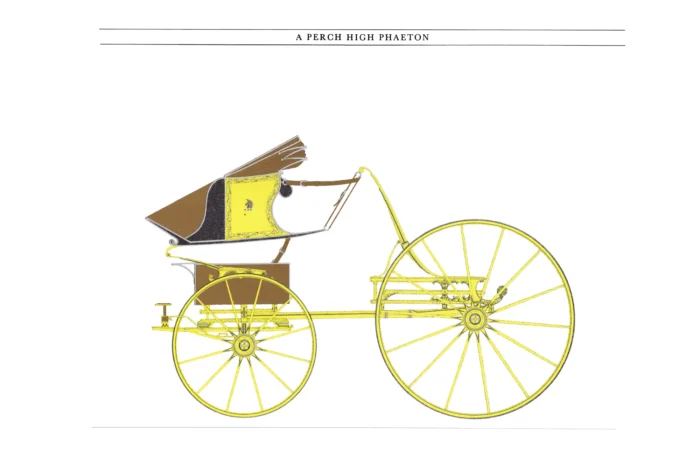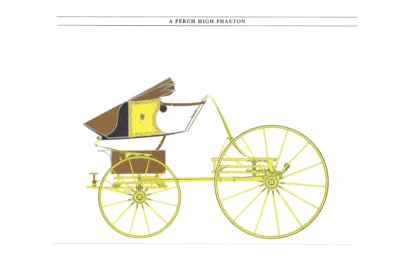Perch High Phaeton
£25.00
Perch High Phaeton (scroll down for a more detailed Description)
Published 1962 by © Hugh Evelyn Limited; drawn by Alan Osbahr
Size: c. 38 x 25.5 cm [14 ″ x 10 ″] – may vary slightly from printers’ cut 50 years ago
Printed on medium white cardstock weighing c. 140 g/sm2
Print is STANDARD size – shipping is the same for 1 to 10 prints (based on largest print size in your order) – see Shipping & Returns.
In stock
Description
Summary
An open, four-wheeled, doorless carriage, popular in the 18th and 19th centuries. It contained one or two seats, usually had a folding, or falling, top, and was owner-driven (it had no outside driver’s seat). The most spectacular phaeton was the English four-wheeled high-flyer, the body of which consisted of a light seat for two, resting atop two sets of springs and reached by ladder, very much alike that shown in our image. It was from one of these that the rising poet Thomas Warwick was thrown to his death near the fashionable town of Bath during the 1780’s. The spider phaeton, of American origin, was a light vehicle made for gentlemen drivers. Queen Victoria was particularly associated with the phaeton and there are prints and photos of her driving in them both before and throughout her reign. Its openness put her in danger and there were assassination attempts made on her life while in one by Edward Oxford in 1840 and by Henry Holford in 1846. In her later years she enjoyed travelling in a phaeton drawn by a single donkey or mule, and there are examples of this type in the Royal Collection. Another was put to use by Queen Elizabeth II each June from 1978 to 2011 during the official Queen’s Birthday celebrations, when she travelled to and from Trooping the Colour on Horse Guards Parade in an ivory-mounted phaeton carriage made in 1842 for her great-great-grandmother, Queen Victoria.
Additional information
| Weight | 0.0136 kg |
|---|---|
| Dimensions | 37.5 × 25.5 cm |





